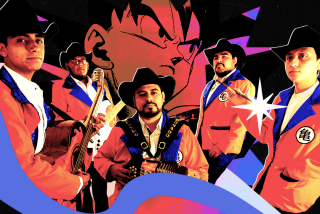Review: An inside look at an animation master’s decision to come back from retirement in ‘Never-Ending Man: Hayao Miyazaki’
- Share via
Starting as a dirge and ending as an ode to joy, “Never-Ending Man: Hayao Miyazaki” provides a privileged glimpse into the creative processes of one of the greatest animators who ever lived.
That would be Japan’s acknowledged master, director of landmarks including “My Neighbor Totoro” and the Oscar-winning “Spirited Away” and such a towering international figure that an exhibit about his work has just been announced as opening the Academy Museum of Motion Pictures next year.
But when “Never-Ending Man,” directed by veteran Miyazaki whisperer Kaku Arakawa, begins, the offices of the filmmaker’s longtime Studio Ghibli home are eerily empty.
That’s because in September of 2013 the then-72-year-old animator, long-rumored to be retiring, officially said goodbye. “This time I mean it,” he told a hushed press conference. “I’m quitting.”
“Never-Ending Man” really begins 16 months after this event, when filmmaker Arakawa, whose relationship with Miyazaki extends back more than a dozen years, shows up almost on a whim at the director’s small atelier.
“Why the camera? I’m retired now, no need to photograph” the director says. “I’m a retired old geezer, a pensioner.”
That long-standing bond among Miyazaki, his longtime producer Toshio Suzuki and Arakawa is one of the film’s strengths, with everyone being so comfortable with one another that Miyazaki uses the camera’s presence to think out loud and clarify his ideas.
It soon develops that Miyazaki, introduced with such daily acts as smoking, making tea, cooking ramen and feeding the birds, is a practiced complainer, always ready to take a down-in-the-mouth attitude toward any situation.
“Old age brings problems, it can’t be helped, it’s getting harder to concentrate,” he says early on, adding thoughts like “all we can do now is grow old” and “I’m a weak, washed-up old man.”
Maybe not as washed up as he pretends, for in conversations with Suzuki and the director, Miyazaki reveals, almost against his will, that he is thinking of going back to animation despite repeatedly swearing off.
“What am I going to do with the time I have left?” he asks rhetorically. “I want to create something extraordinary.”
An obstacle to Miyazaki’s return is the fact that the animation world has turned irrevocably away from the hand-drawn films that were his forte and now focuses almost exclusively on the kind of computer-generated imagery he has little experience with.
It turns out that Miyazaki has been harboring the notion of a short film with the self-explanatory title of “Boro the Caterpillar” that contains “ideas I can’t draw by myself.”
Ever helpful, producer Suzuki rounds up a group of CGI adepts, all young enough to be Miyazaki’s grandchildren, and hires them to help the old master execute his ideas.
This intergenerational coexistence is the heart of “Never-Ending Man,” as both extremes of the age continuum venture out of their comfort zones to make this collaboration work.
The young computer folks are both abashed and bemused, respectful of Miyazaki’s accomplishments but a bit mocking about his lack of knowledge.
Miyazaki, for his part, is fascinated and energized by the new technology (“it’s like creating a new virus,” he exclaims) but unwilling to give up the tight control of his own vision that’s always been a hallmark of his creative life.
In fact, one of the unexpected elements here is seeing Miyazaki being a stern and unbending taskmaster. “The studio eats people,” he admits at one point about the past. “I ate them all.”
The end result of all this is the announcement that the master has been rejuvenated enough by the contact we’ve seen to come all the way out of retirement and begin a new feature.
“It’s boring to do nothing, it’s as simple as that, it’s better to try and fail than not try,” he says in a moment of candor that typifies the film’s honesty.
“I’m prepared to die,” he says with finality of the new feature, “to die before it’s finished, to die with something to live for.”
------------
‘Never-Ending Man: Hayao Miyazaki’
Not rated
Running time: 1 hour, 10 minutes
Playing: Dec. 13 and 18 in multiple Fathom Events theaters
More to Read
Only good movies
Get the Indie Focus newsletter, Mark Olsen's weekly guide to the world of cinema.
You may occasionally receive promotional content from the Los Angeles Times.











